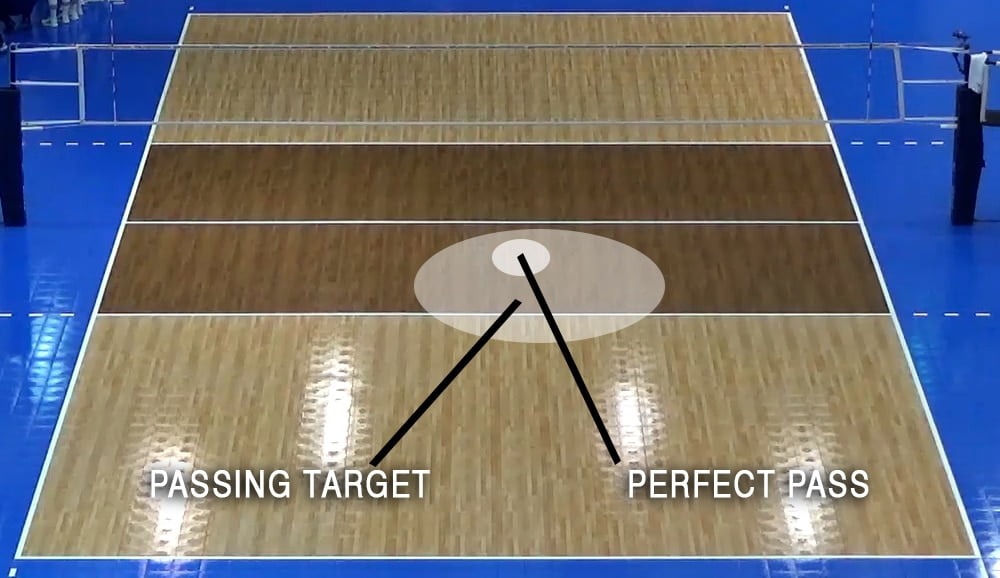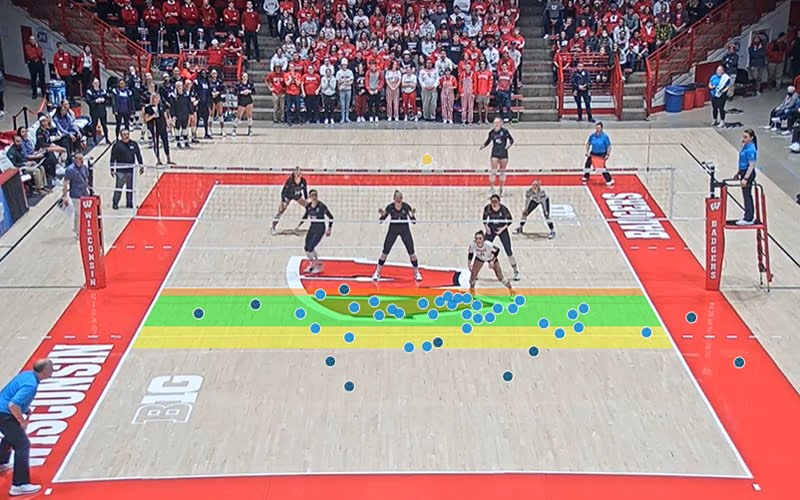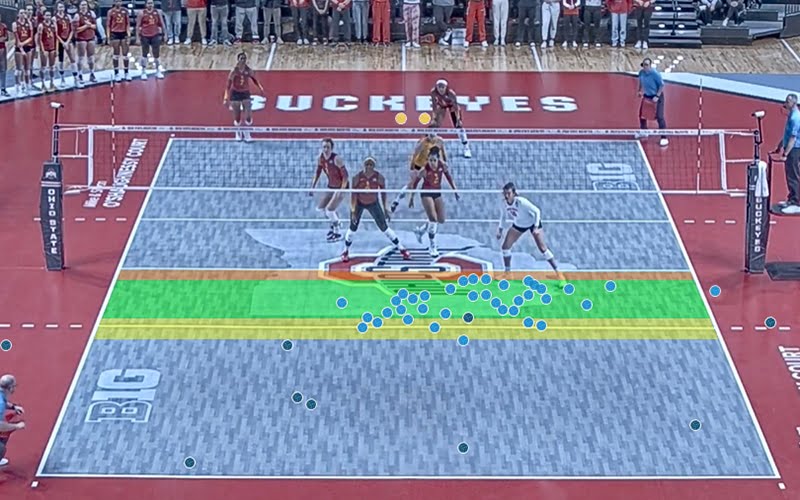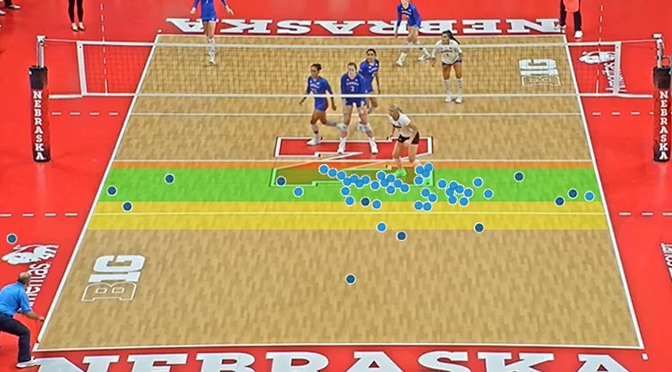Passing Targets In Volleyball
Think about targets in sports. Dart throwers throw to a target on a dart board. Baseball pitchers throw to a target behind home plate. Golfers shoot toward a target. Soccer players kick at a target. Every single sport we play and every single sport we watch has targets.

I was recently watching a Los Angeles Dodgers baseball game and heard the Dodgers analyst, former National League MVP and Cy Young award winner Orel Hershisher, say, “Pitchers miss their targets all the time. If they didn’t, no team would ever score a run because every pitch would be perfectly placed at the target.” Think about that. The best pitchers in the world, even the ones making more than a million dollars per game pitched, miss their targets — frequently.
In volleyball, we have lots of targets. We have serving targets, setting targets, digging targets, and passing targets. Let’s focus right now on passing targets. We tell coaches at every one of our coaching clinics that one of the fastest ways they can help their teams improve in the shortest amount of time is to change the target their passers are aiming for.
Former AVCA national coach of the year, Chris McGown, believes that the best volleyball pass in the history of volleyball is an arm’s length off the net and an arm’s length to the right of the center of the court. But is that where our passers should intentionally aim to pass?
Just like every other athlete in every other sport, the athletes we coach will commonly miss their targets. With passing targets in volleyball, some passes will go past the target. Some passes will not reach the target. Others will go left or right. And a very select few will land right on the target. If our passers are aiming for the location of the “perfect pass”, but end up passing the ball a bit too far, we’re now looking at a pass that is too tight to the net or maybe even over the net. Almost always, these types of passes will immediately result in a point for the opponent. Chris states, “When perfect is our goal, we end up giving away a lot of points with tight passes and overpasses.”
Instead of striving to be “perfect” a few times, we encourage coaches to be “good” a lot of times. The USA women’s national team’s passing target is four feet off the net. Some of the best college teams in the country place their target five feet off the net. With these targets further away from the net than a “perfect pass” would be, our passers have a much larger margin of error than they’d have with a target closer to the net. Now they can pass a ball a few feet past the target without giving away the point. A pass short of the target is still a good pass inside the three-meter line.
Regardless of your level, consider moving your passing target to somewhere around five feet off the net. The result of doing so will be much fewer overpasses, much fewer tight passes, and way more good passes that your athletes can turn into a set and then a kill.

To illustrate how some of the best teams in the country play, I charted the passes of the top 4 Big-Ten teams from the first two rounds of the 2022 NCAA tournament. Here are some of the most noteworthy observations when looking at these teams’ passes.
Out of 212 total passes charted:
- Only 4 passes went over the net, representing less than 2% of the total passes.
- Only 2 passes were too tight to the net to allow the setter to set the ball, representing less than 1% of the total passes.
- 13 total passes were good passes within two feet of the net, representing 6% of the total passes.
- The overwhelming majority of the passes were around 5 feet off the net.
In the images below:
- The orange-shaded area represents the area of the court from the midline to 2 feet off the net.
- The green-shaded area represents the area of the court from 2 feet off the net to 8 feet off the net.
- The yellow-shaded area represents the area of the court from 8 feet off the net to 12 feet off the net.
- The light blue volleyballs represent passes that were set overhead by the setter.
- The dark blue volleyballs represent passes that were set by a non-setter or bump set by the setter.
- The yellow volleyballs represent overpasses.
WISCONSIN BADGERS Heatmap

Total Passes Charted: 44
Settable passes within two feet of the net: 2
Non-settable passes too tight to the net: 1
Overpasses: 1
Pass Errors: 2
NEBRASKA HUSKERS Heatmap

Total Passes Charted: 54
Settable passes within two feet of the net: 2
Non-settable passes too tight to the net: 0
Overpasses: 0
Pass Errors: 5
MINNESOTA GOPHERS Heatmap

OHIO STATE BUCKEYES Heatmap

Total Passes Charted: 51
Settable passes within two feet of the net: 5
Non-settable passes too tight to the net: 0
Overpasses: 2
Pass Errors: 4

